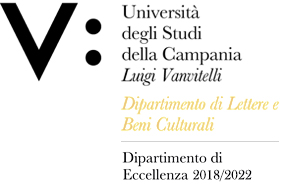Paologiovanni MAIONE
Insegnamento di DRAMMATURGIA IN ETA' MODERNA
Corso di laurea magistrale in ARCHEOLOGIA E STORIA DELL'ARTE
SSD: L-ART/05
CFU: 6,00
ORE PER UNITÀ DIDATTICA: 30,00
Periodo di Erogazione: Primo Semestre
Italiano
| Lingua di insegnamento | Italiano |
| Contenuti | Leggere il teatro: dall'antichità al Ventesimo secolo |
| Testi di riferimento | Leggere il teatro. Dieci testi esemplari, a cura di Luigi Allegri, Roma, Carocci, 2023 |
| Obiettivi formativi | Il corso mira alla conoscenza dei lineamenti della storia del teatro e dello spettacolo, dall'antichità ai giorni nostri. |
| Prerequisiti | Nessuno |
| Metodologie didattiche | Lezioni frontali ed eventuali partecipazioni a convegni, conferenze e incontri con studiosi e artisti. |
| Metodi di valutazione | Verifica orale tramite colloquio in sede d’esame |
English
| Teaching language | Italian |
| Contents | Reading the theatre: from antiquity to the twentieth century |
| Textbook and course materials | Leggere il teatro. Dieci testi esemplari, a cura di Luigi Allegri, Roma, Carocci, 2023 |
| Course objectives | The course aims to gain knowledge of the features of the history of theater and entertainment, from ancient times to the present day. |
| Prerequisites | None. |
| Teaching methods | Lectures and possible participation in conferences, conferences and meetings with scholars and artists. |
| Evaluation methods | Oral examination |








